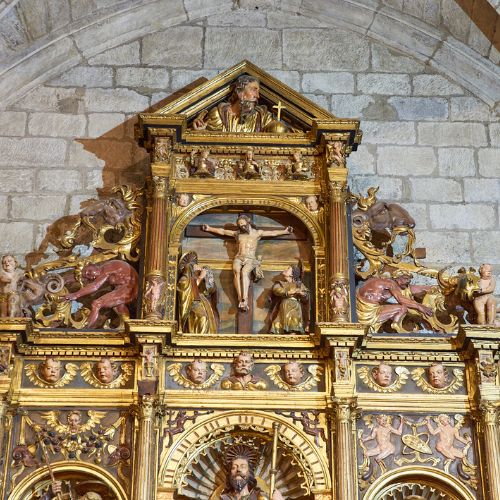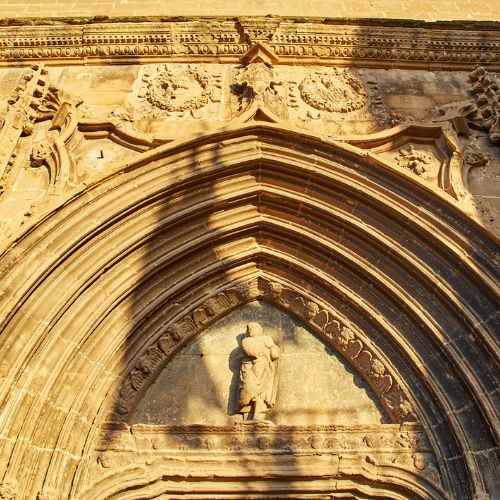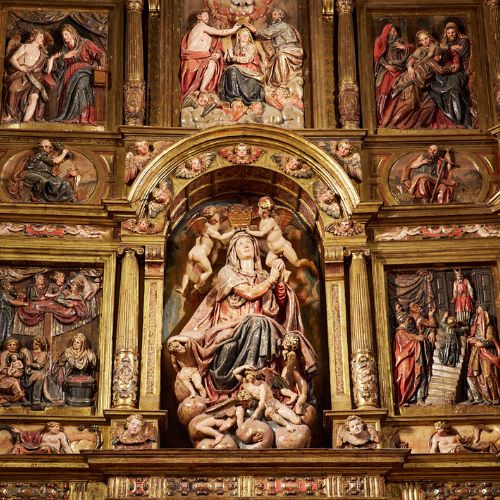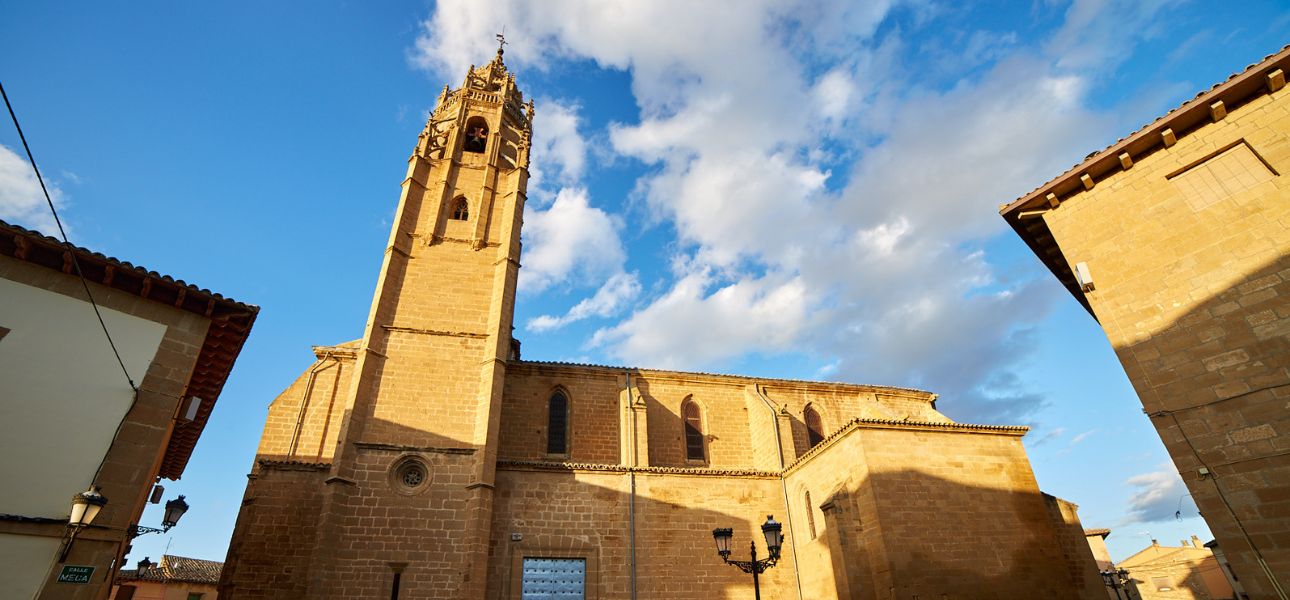Descripción
Iglesia de Santa María
Me alzo en el centro de la villa de Sádaba, orgullosa, con mi torre campanario mirando al cielo y sobresaliendo sobre todo el caserío. Cuando el viajero llega a Sádaba, mi magnífica aguja es el elemento más sobresaliente y llama la atención por su altura y la belleza de sus proporciones y decoración. Fui construida en el s.XVI, en época del Emperador Carlos V. De hecho, si me visitas, debajo del coro podrás ver una inscripción que conmemora la visita que el rey me hizo tras mi consagración en 1549. La riqueza de mi estilo arquitectónico denota el fuerte impulso económico que ejerce la villa de Sádaba, enclavada en la llanura cerealista de las Cinco Villas. Un claro ejemplo de ello son también las numerosas casonas palaciegas que jalonan las calles de la villa. Soy de hermoso estilo gótico aragonés y una de las más bellas representantes de este estilo arquitectónico de la comarca. Según Abbad Ríos, todas las iglesias góticas edificadas posteriormente en la comarca se construyeron a mi imagen y semejanza. Si accedes al interior, un amplio espacio da la bienvenida al visitante. Albergo importantes obras religiosas, como el Retablo Mayor, obra de Juan de Anchieta, y la conocida Capilla del Santo Cristo o “Cristo Marinero”. Según la tradición oral, dicen que un marino llamado Tiburcio Xinto, sadabense de nacimiento, encontró la imagen de Cristo en el Océano Atlántico en 1503 y, con permiso del emperador, la trajo a su villa natal. Desde entonces se ha convertido en una de las obras más conocidas y queridas de este municipio.
I stand proudly in the center of the village of Sádaba, with my bell tower looking to the sky and towering over the entire hamlet. When a traveler arrives at Sádaba, my magnificent spire is the most eye-catching element and attracts attention because of its height and the beauty of its proportions and decoration. I was built in the 16th century, during the reign of Emperor Charles V. In fact, if you visit me, under the choir you will see an inscription commemorating the king’s visit to me after my consecration in 1549. The richness of my architectural style denotes the strong economic impulse exerted by the town of Sádaba, located in the cereal plain of the Cinco Villas Region. A clear example of this is also the numerous palatial mansions that line the streets of the town. I boast a beautiful Aragonese Gothic style of architecture and am one of the most beautiful representatives of this architectural style in the region. According to Abbad Ríos, all the Gothic churches built later in the region were built in my image and likeness. If you step inside, a large space welcomes the visitor. It houses important religious works, such as the Main Altarpiece, the work of Juan de Anchieta, and the well-known Chapel of Santo Cristo or “Cristo Marinero”. According to oral tradition, it is said that a sailor named Tiburcio Xinto, a Sadabian by birth, found the image of Christ in the Atlantic Ocean in 1503 and, with the emperor’s permission, brought it back to his native village. Since then it has become one of the best-known and most beloved works in this area.
Je me dresse fièrement au centre du village de Sádaba, avec mon clocher rivé vers le ciel et surplombant le hameau. En arrivant à Sádaba, le voyageur remarquera sans aucun doute ma superbe flèche : sa hauteur, ses proportions élégantes et la beauté de sa décoration attirent tous les regards. Je fus construite au XVIe siècle, à l’époque de l’empereur Charles V. En effet, si vous venez me contempler, vous verrez sous le chœur une inscription qui commémore la visite du roi après ma consécration en 1549. La richesse de mon style architectural dénote le fort dynamisme économique exercé par le village de Sádaba, niché dans la plaine céréalière des Cinco Villas. Les nombreuses demeures somptueuses qui bordent les rues du village témoignent notamment de cette prospérité. J’affiche un magnifique style gothique aragonais dont je suis l’une des plus belles représentantes dans la région. Selon Abbad Ríos, toutes les églises gothiques construites plus tard dans la région ont été édifiées à mon image. En mon sein, le visiteur est reçu dans un vaste espace accueillant. J’abrite d’importantes œuvres religieuses, telles que le retable principal, œuvre de Juan de Anchieta, et la célèbre chapelle de Santo Cristo ou « Cristo Marinero ». La tradition raconte qu’un marin nommé Tiburcio Xinto, né à Sádaba, trouva l’image du Christ dans l’océan Atlantique en 1503 et, avec la permission de l’empereur, la ramena à son village natal. Depuis lors, l’œuvre est l’une de plus connues et appréciées de la commune.
Foto a Foto








